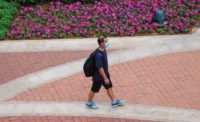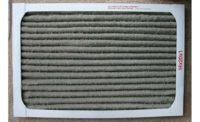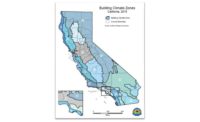On Aug. 25, 2020, the National Institute of Building Sciences (NIBS) held its fourth in a series of COVID-19 virtual town halls, sponsored by Dell Technologies and brought to you by the NIBS Consultative Council. The town hall — which was moderated by Vicki Worden, president and CEO of the Green Building Initiative (GBI) — received more than 855 registrants from across the building industry; universities; officials representing federal, local, and state governments; and more.
During this town hall, panelists stressed that healthy buildings and resilience are intertwined. More than ever, as COVID-19 changes the way business is conducted, health and resilience are more important than ever before.
“Everyone is concerned about reopening schools and all establishments in a safe way,” said Lakisha A. Woods, president and CEO, NIBS. “It is the people who have engaged in these calls who will take the new normal and turn it into a positive.”
The panel also covered racial inequity and disparities between communities with vulnerable populations and those that can afford and do invest in healthier buildings and greener living standards.
LEED as a Living Standard, Not Just an Energy Standard
The USGBC is committed to a sustainable future through LEED, a program for green buildings and communities worldwide.
The impact of this pandemic will be felt for years to come, said Mahesh Ramanujam, president and CEO, USGBC, and Green Business Certification Inc. (GBCI).
Remaining resilient in business and in life is an opportunity to form a resilient society.
“There is still much work to be done to effect a global change,” he said. “We have an epidemic of natural disasters in this decade.”
What’s currently playing out in California — and its fierce wildfire season — is a clear picture of needing all hands on deck with regard to climate change and reducing emissions.
According to the National Oceanic and Atmospheric Administration’s National Centers for Environmental Information, the U.S. has sustained 273 weather and climate disasters since 1980, where overall damages/costs reached or exceeded $1 billion. The total cost of these 273 events exceeds $1.79 trillion.
“We must face a new reality,” Ramanujam said. “The world may not look like anything we’ve left behind. Because of the pandemic, the most vulnerable among us will feel the greatest impact. In fact, they already do. Healthy people in healthy places is the fastest way to build a healthy economy.”
What Does Green Recovery Look Like?
Recovery and safely getting back into schools and work is much bigger than space planning and systems design.
“Public health is a powerful lens through which we can work for change,” said Stephanie Carlisle, research analyst with the Carbon Leadership Forum.
COVID-19 is disproportionately affecting Black communities, who must face environmental racism as many of these communities are close to fossil fuel power plants and other sources of air pollution. In the U.S. Mid-Atlantic, half of minorities can’t pay their utility bills, Carlisle added.
“These are not new problems, they are systemic problems,” she said. “They define how we define green buildings.”
It’s with this mindset that school officials, communities, and building officials consider social injustice and sustainability when reopening the nation’s schools.
“These issues are not someone else’s problem, but they are at the heart of ethical design practice,” Carlisle said. “We might need to change how we talk about green buildings to rise to present challenges.”
Projects must also be vetted for long-term health. The building industry doesn’t do schools any justice if we build things we can’t maintain.
Zip Code Is More Important than Genetic Code in Determining Health
The U.S. spends a great deal on health care, but we don’t see proportionate benefits, said Ruth Thomas-Squance, Ph.D, MPH, director of field building of the Build Healthy Places Network.
“Your zip code is more important than your genetic code in determining health,” she said. “Traditional health care methods focus on treating individual maladies. We are more effective when we are not working in traditional silos. Public health can contribute great knowledge for determining community needs.”
Take for example, the city of Richmond, Virginia. While traveling across the city, life expectancy goes down by 13 years. This is true of most cities across the U.S.
Change occurs through partnership, said Thomas-Squance. Flexible organizations that may be able to partner with nontraditional groups or agencies will lead to more effective responses. This places equity at the center of the nation’s recovery. Cross-sector partnerships that foster resilience must be built; the connections are already there.
“Health starts in our homes,” Thomas-Squance said. “This won’t be the only coronavirus that will develop.”
Beyond COVID: Good Leaders Have Their Eyes on What’s Next
There have been many epidemics that were near-pandemics, and buildings play a key role in either protecting humans or exacerbating the problems.
“This is not rocket science; we’ve long known how to operate our building effectively,” said Joseph G. Allen, assistant professor with the Harvard T.H. Chan School of Public Health.
It looks like this: addressing transmission with healthy building control strategies, proper ventilation and filtration, universal mask-wearing and protective face coverings, and physical and social distancing. Prioritizing work from home also helps.
“Good leaders have their eye on what’s coming next,” he said, mentioning the importance of indoor health, economic health (healthy buildings drive business performance), and resource health (i.e. chemical exposures and the toxic legacy of pollutants).
Green buildings alone have been responsible for a number of positive changes, namely, reduced numbers of missed school days, missed work days, and tens of thousands of fewer asthma attacks.
Reopening Schools will not Be Business as Usual
From a public health perspective, the headlines next year are likely to be horrific with decisions around school reopening being all over the map, said Allen. Virtual learning will further exacerbate inequities.
He pointed out that 18 million youth do not have access to high-speed internet.
But physically opening schools should not happen if COVID numbers are high.
“You cannot open when community spread is raging,” he said. “It cannot be business or schools as usual. You have to put in systems in place.”
Some communities have been able to consistently keep their COVID numbers down. These include YMCAs in New York and child care centers that have solidly stayed open to the children of essential workers and health care professionals.
Investments such as proper filters and reworking ventilation are investments worth making, Carlisle said. The benefits of those improvements will persist and lead to more resilient communities.
“When we focus on vulnerable communities, we will raise up everyone,” she said. “As designers, we have an incredible role to play. If we believe the built environment is important, we have a duty and an obligation as an industry to see that through.”




